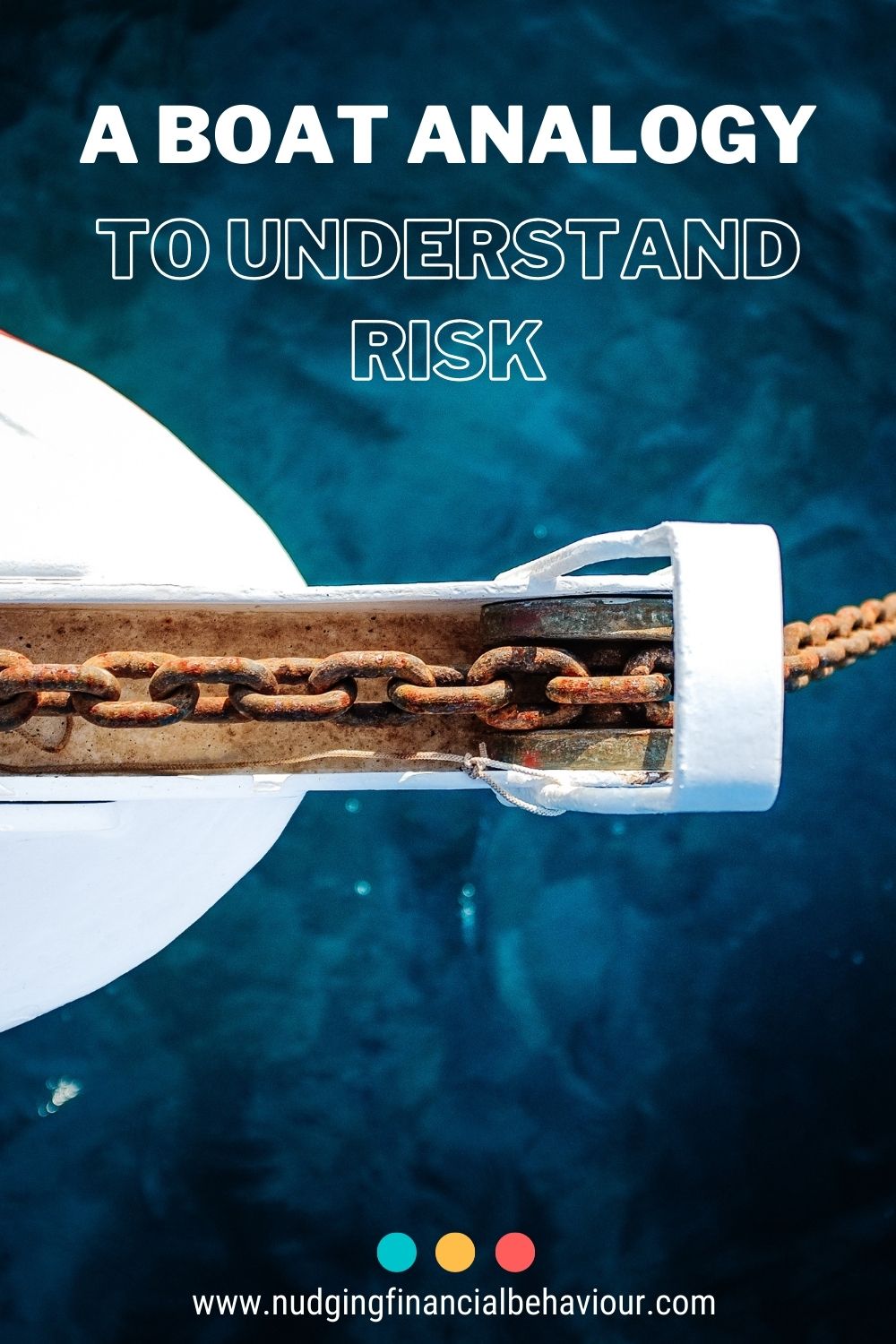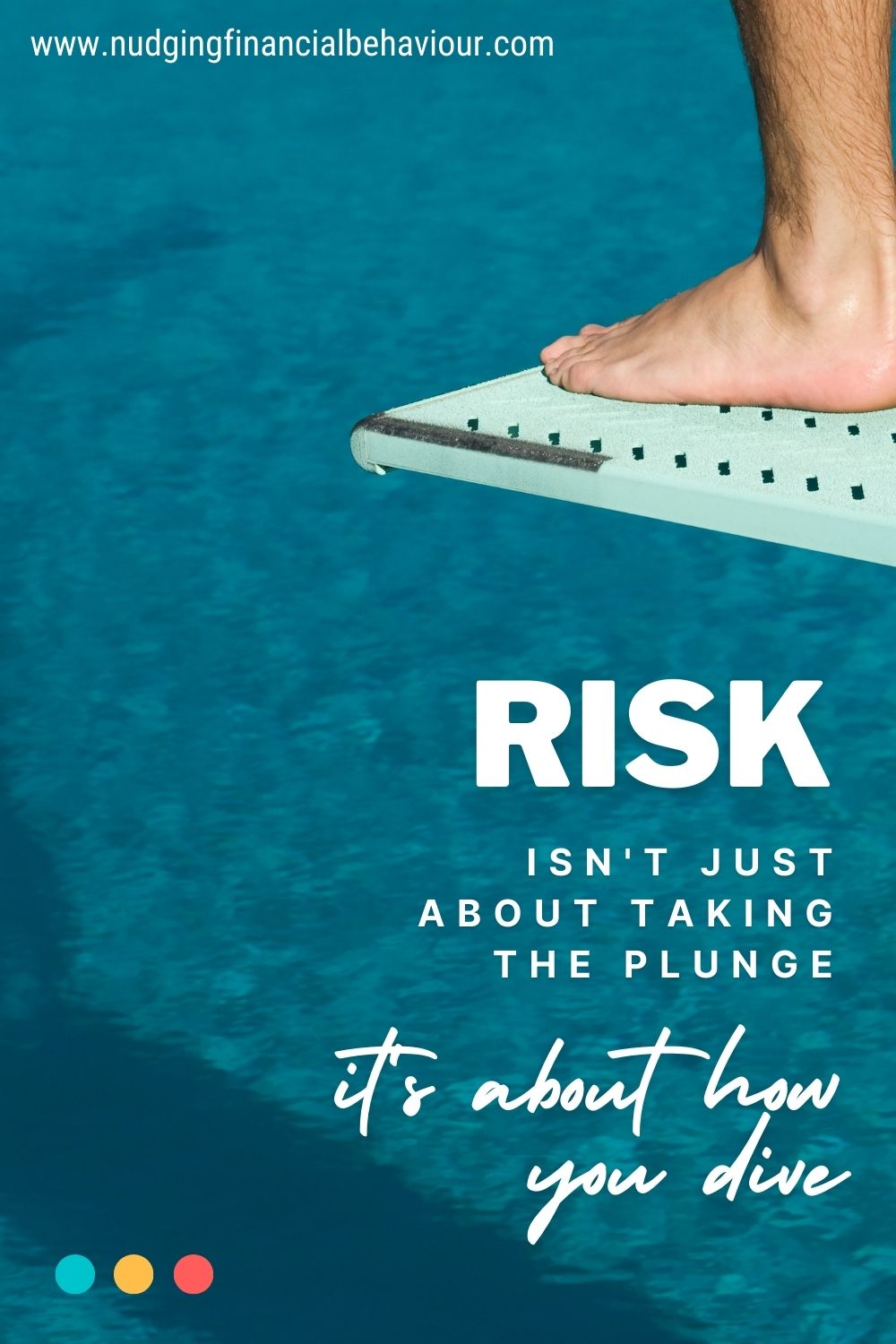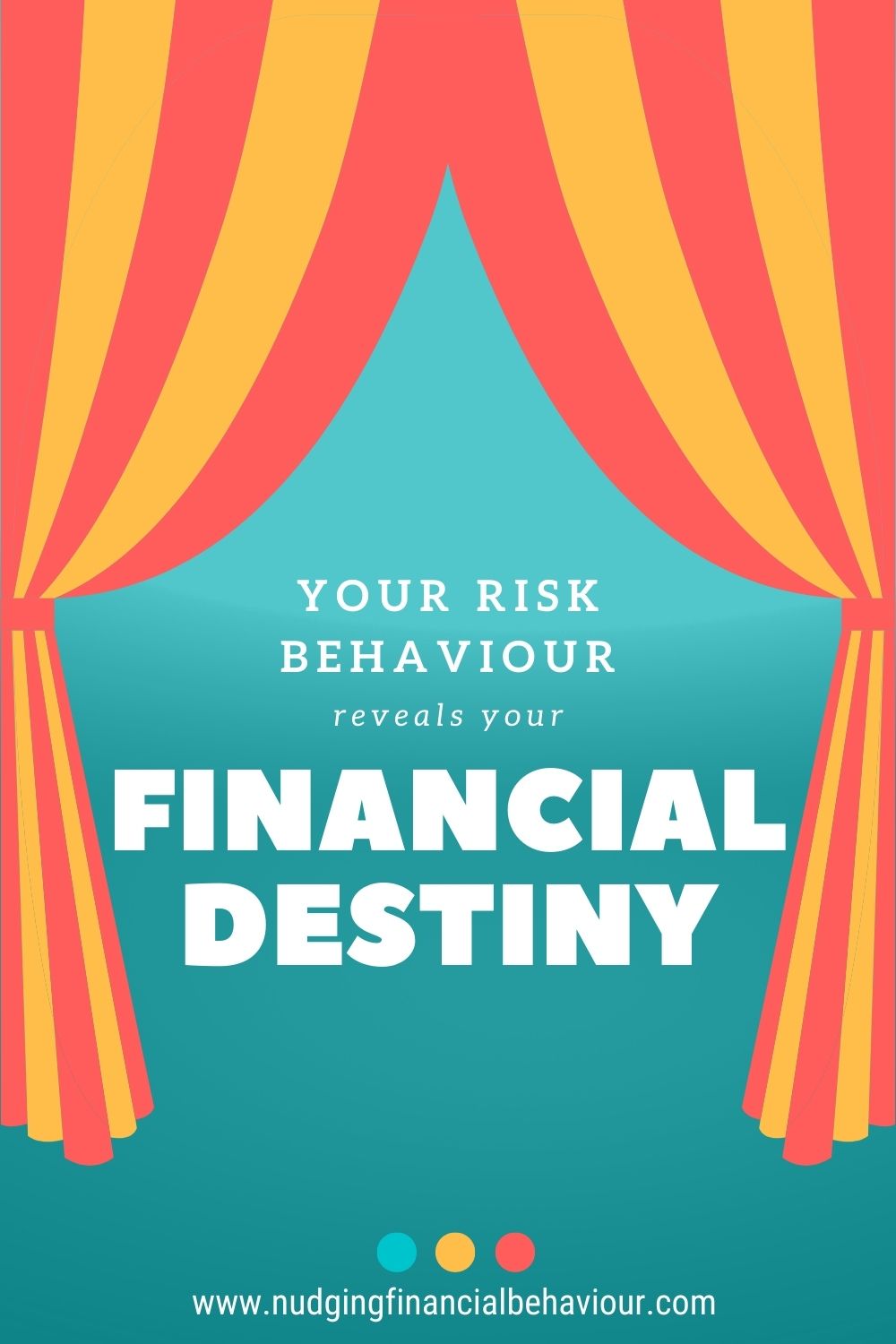Welcome to Season 2 of the Nudging Financial Behaviour podcast. This series is all about understanding behavioural biases. Brace yourselves as we plunge headfirst into the labyrinth of human quirks and biases. We’re starting off with risk… risk tolerance, risk aversion, risk personality, risk behaviour. It’s a big topic, with lots of moving parts.
The thing we need to all be aware of is that human beings are not always rational, even when we think we’re doing the right research and asking the right questions. But fear not! Amid the chaos of confirmation bias, overconfidence and all the other biases we’ve discussed so far – and all the ones we’re going to still discuss in this season – lies the power to transform. It’s possible to change our behaviour and end up making smarter choices – especially about our finances.
We’re not just diving into the sea of biases; we’re conquering then! And we’ve got some great experts lined up to help us unpack the various topics of each episode. In this post, we’re talking to Steve Ward – a high performance coach, trainer and consultant to trading, investing and banking professionals. Listen to the podcast or watch the full episode below and subscribe to the channel so you know when new episodes drop.
In this post, we’re plunging into the daring realm of RISK. You might have heard terms such as ‘risk tolerance’ or ‘risk aversion’ before. That’s the focus.
A riskier investment is one that could yield a higher return for you, but you could also lose the money you originally put in over the same period of time. Generally, the higher the risk – the higher the potential reward. But at the same time, the higher the risk – the higher your chance of losing your money too.

How much risk you are able to tolerate can have far-reaching implications on many decisions. Not just your investments, but life in general.
Are you the daredevil friend craving bungee jumps, or the wincing spectator?
The entrepreneur paving new paths, or the steadfast employee?
How much risk you are able to tolerate can have far-reaching implications on many decisions. Not just your investments, but life in general.
Are you the daredevil friend craving bungee jumps, or the wincing spectator?
The entrepreneur paving new paths, or the steadfast employee?

Coming back to investments specifically, if risk tolerance is referring to your ability to handle those ups and downs in the market, another term you can look out for is VOLATILITY. Let’s decode that term.
See the graph below of the S&P 500, a stock market index which tracks the performance of 500 of the largest companies in the US. When we look at just one day, you can see lots of ups and downs in the graph. When you go to the 5-day view, it’s a little less volatile.
As you zoom further out – 1 month, 6 months, a year and 5 years – you can see that the overall trend is upwards.
This is the volatility of the market and the individual shares – quick ups and downs in the short term. Long term, we know that the market always goes up.
Short-term chaos, long-term ascent – the market’s wild dance. Share on XThe market is inherently risky because of this volatility. But this isn’t necessarily a problem for someone who has low risk tolerance, which we refer to as being risk averse. If you are looking at a long-term investment and have the patience and means to ride out the lows, you can still reap the rewards of those long-term highs.
This is why some people like to differentiate between risk TYPE and risk BEHAVIOUR.
Risk type refers to your personality. Which is something we’re pretty much stuck with. But your personality (or risk type) determines how you perceive risk, how you react to it, and then how you make decisions – particularly when there’s an unknown element to things. Those decisions are then what we refer to as your risk behaviour.
Now, meet Steve Ward, the maestro of high performance. He unravels the mysteries of risk with a boat analogy.
If we think about a boat that’s anchored into the ocean and we’ve got the boat on the surface, we’ve then got the length of rope and we’ve got the anchor also in the seabed. The anchor represents probably our risk type, our disposition, our personality around risk preferences and how we might manage and perceive risk. And that’s gonna be relatively stable through most of our adult hood.
But we’ve got this length of rope. Now the anchor can still drift of course in the sand, but it’s relatively fixed. The length of rope and then the boat on the surface. Now the length of rope determines really how much the boat can move. So, if you’ve got a short length of rope, the boat’s going to be relatively stable. If you’ve got a longer length of rope, the boat can move quite a lot on the top. Now for me, the rope is what we might call risk attitude or it’s the representation of different risk attitudes that reflects the fact that we may have different risk behaviours in different contexts.

And NO, you cannot move the boat and then drop anchor somewhere else.
It doesn’t mean our behaviour can’t change, of course. All we’re saying is that the anchor point is fixed, but through experience, through training, through practice, we can essentially lengthen the rope so we can get the boat moving wider on the surface. So now for some people, maybe traumatic life events might create a bigger shift in the anchoring, but for most of us, it’s not really about we’re moving the anchor, it’s we kind of acknowledge the anchor point. And then we use the benefit of the fact that we can flex our behaviour through training, practice, experience, and so on to then give us more rope essentially to allow us to show different behaviours in different contexts.
Basically, our risk behaviour is impacted by our personality and we can’t do very much about that… but our behaviour can be influenced by experience, familiarity, context, people you’re around, cultural influences, and that we can do something about. We have an element of control, we can lengthen that rope.
Steve shared an example of how some of us embrace risk head-on, leaping from the high dive without hesitation. Others approach it cautiously, conquering each level gradually. It’s not just about the amount of risk; it’s about how you handle it. In trading, some thrive in volatile markets, while others tread lightly.

If somebody was learning to high board dive, for some people, they might go, do you know what? I’ve done the one, I’ve jumped from the poolside. I’ve done the one metre springboard. Let’s miss out the three metre. Let’s go straight to the five. Or, you know what, let’s just go straight to the 10 and dive off and see what happens.
Other people, that’s going to be terrifying and they’re going to, you know what, let’s do the pool, off the pool side till I feel really comfortable. Let’s go to the one. Let’s go to the three. Let’s go to the five. Let’s go to the 10. So even that, you know, how we take risk reflects the forces on this.
If somebody was learning to high board dive, for some people, they might go, do you know what? I’ve done the one, I’ve jumped from the poolside. I’ve done the one metre springboard. Let’s miss out the three metre. Let’s go straight to the five. Or, you know what, let’s just go straight to the 10 and dive off and see what happens.
Other people, that’s going to be terrifying and they’re going to, you know what, let’s do the pool, off the pool side till I feel really comfortable. Let’s go to the one. Let’s go to the three. Let’s go to the five. Let’s go to the 10. So even that, you know, how we take risk reflects the forces on this.

It’s not just about how much risk we can take. It’s more about HOW we take that risk.
In the trading and investing world some people will be happy with taking larger risk, trading in more volatile market conditions where there’s uncertainty. And others will be more sensitive to that.
So, there’s lots of ways that we can shift our risk-taking behaviour in a way to mediate what our preferences might be. And that’s actually quite important that we understand who we are as risk takers. So that if we want to take more risk, we can do it in a way that almost reflects our preferences. Congruent is the word I often use and it, we’re kind of acting in ways of congruent with our preferences and tendencies.
Aligning your investment strategy with your disposition is key. It’s like choosing a sport that suits your strengths. Olympics or trading, finding your niche is crucial. The diversity of winners echoes the diversity in strategies. Here’s how Steve explains it…
Think about sports. So, you know, if a person wanted to be a sports person and they made that choice, and maybe they wanted to compete at a high level, what that person would need to have an understanding of is, you know, what their strengths are, which sports might be more preferable for them? Is that person maybe a leaner, slighter person, good at long distance events? Are they maybe someone who’s full of fast twitch fibres, more muscular for sprinting? Is that person actually got great hand-eye coordination? Would be great at racket sports? Individual? Would they be a great team player? Even if you go into a team, if you could say football, are you the goalkeeper, are you midfield, are you great defensively, are you great as a forward, as an attacker.
So, there’s so many different variations of what is a sports person and how you can be successful in sports. And we can all obviously we see that the Olympics is a great example. You know, everyone that wins a medal is doing it in a different event to everybody else. And they’ve kind of found that’s their little niche.
And I think trading and investing is the same. There’s many ways to trade or invest. Different markets, different styles and strategies.
Take calculated risks. That is quite different from being rash.
Try thinking of your risk behaviour like choosing a sport. Understand your strengths, preferences and tendencies. There are a myriad of ways to trade or invest – find out what aligns with your disposition. It’s not about working against yourself; it’s about navigating the terrain that suits you.
But how self-aware are you?
Think about how you chose your last holiday? Was it spontaneous or meticulously planned?
Do you pick an interesting location, book a flight and a hotel for your first stop, and then see how it goes? Or, did you spend months researching different locations. Going through reviews of hotels. Scheduling every single day and booking it all in advance?
These two behaviours are different, and they’re reflective of a different risk behaviour. Now apply this same thinking to your financial decisions. Do you play it safe? Are you very analytical about buying a house, taking out a loan, making an investment? Past behaviour hints at future choices.
While past performance doesn’t predict future performance, our past behaviour does give us an indication of future behaviour.

And of course, always be mindful of different contexts. Things can play out differently in different contexts.
Your ability to handle risk isn’t just down to your personality. External factors play a big part in risk tolerance as well. Share on XIt can be very tempting to think of risk aversion as being a bad thing. But if you think about everything we’ve just discussed, risk aversion isn’t the villain. There are other behavioural biases far more treacherous.
The boat that’s anchored down is a great analogy. Acknowledge the anchor – your personality – and utilise the flexibility of your risk attitude. But remember that your anchored boat is your sanctuary. Feel the adrenaline, embrace the risk and let the journey unfold!
Narrow framing – Narrow framing, the compromise effect, glossing, and the enabling frame. We need frames to make sense of the world. But they cause problems.
The anchored trader – Anchors tie us down and can have serious consequences for investors and traders. Don’t be the anchored trader.
Let us know in the comments below.
I am passionate about helping people understand their behaviour with money and gently nudging them to spend less and save more. I have several academic journal publications on investor behaviour, financial literacy and personal finance, and perfectly understand the biases that influence how we manage our money. This blog is where I break down those ideas and share my thinking. I’ll try to cover relevant topics that my readers bring to my attention. Please read, share, and comment. That’s how we spread knowledge and help both ourselves and others to become in control of our financial situations.

Dr Gizelle Willows
PhD and NRF-rating in Behavioural Finance
Receive gentle nudges from us:
[user_registration_form id=”8641″]
“Essentially, all models are wrong, but some are useful.” – George E.P. Box
